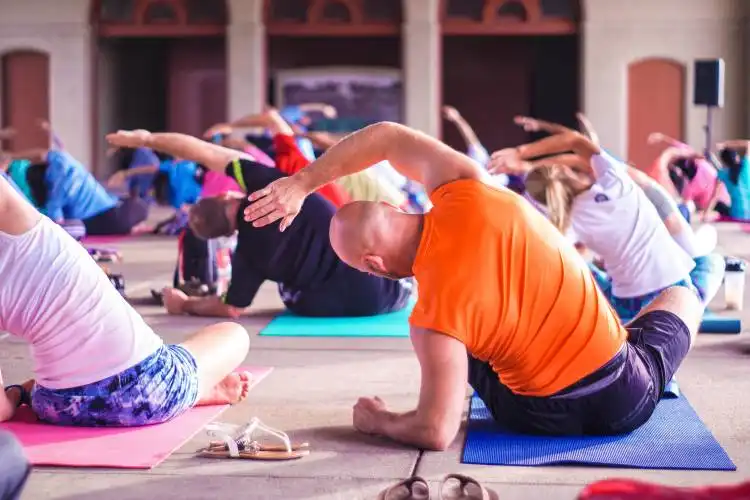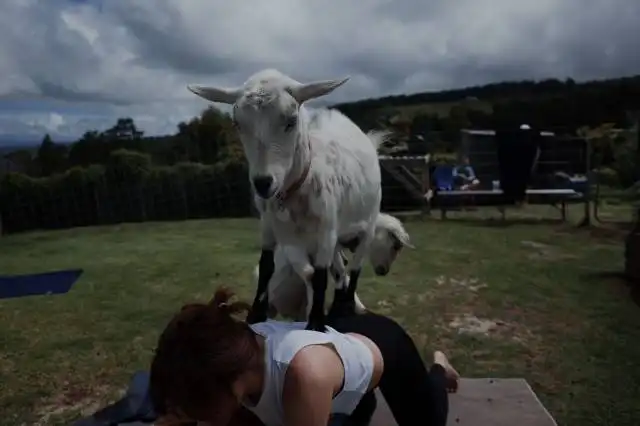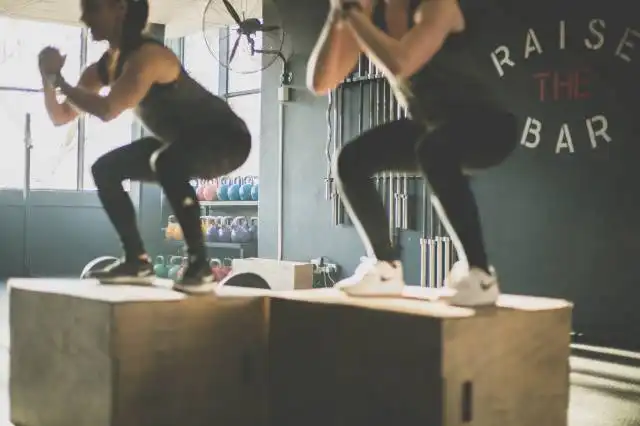Start a Zumba Studio
Dancing to the Beat of Success: Launch Your Own Zumba Studio
| Updated


ZUMBA STUDIO
Bust some serious moves and let the rhythm of entrepreneurship take over with a Zumba Studio! Imagine a place where fitness meets enjoyment - that's precisely what a Zumba Studio is all about. Dance your way to success by offering high-energy classes where people can meet their fitness goals while letting loose. As a Zumba studio owner, you'll be providing a fun and engaging way for people to stay fit through dance-based workouts. So, put on your dancing shoes and get ready to turn fun, sizzling Latin beats into profit!
Jump to Business Plan
RELATED BUSINESS IDEAS
Browse ALL Health & Beauty Innovations Business Ideas
Discover Your Perfect Domain
Unlock the door to your online success with our hand-picked selection of premium domain names. Whether you're starting a new venture or rebranding an existing one, the right domain can set the tone for your digital presence. Browse through our curated list, each with its unique potential to enhance your brand's visibility and credibility.
ZUMBA STUDIO MINI BUSINESS PLAN
This a quick reality check to help you identify the strengths and weaknesses of your business concept before you dive in.
Expected Percent Margin:
- Gross Margin: 50-70%
- Net Profit Margin: 15-25%
Earnings Expectations:
Daily Earnings:
- Assuming 5 classes per day
- $10 per participant
- 10 participants per class
Minimum Expected: $500 Maximum Expected: $1,000
Weekly Earnings:
- Assuming 6 days of operation
Minimum Expected: $3,000 Maximum Expected: $6,000
Monthly Earnings:
Minimum Expected: $12,000 Maximum Expected: $24,000
Annual Earnings:
Minimum Expected: $144,000 Maximum Expected: $288,000
Note: This does not take into account extra revenue sources like merchandise sales, personal training, or special events.
Actions to Hit Those Numbers:
Infrastructure and Equipment:
- Initial Investment:
- Studio rent/lease
- Zumba equipment
- Sound system, mirrors, etc.
Marketing and Customer Acquisition:
- Social Media and Online Marketing: Promote heavily on platforms where your target audience is active.
- Partnerships: Partner with local businesses to offer combination deals.
Sales and Customer Experience:
- Membership Plans: Offer different types of membership options to cater to different customer needs.
- Staffing: Train your staff to provide a high-quality, enjoyable experience.
Cost Control:
- Rent: Choose a location where rent is less than 15-20% of expected monthly sales.
- Utilities and Maintenance: Include their cost in your budget.
Business Operations:
- Classes Schedule: Adjust your schedule based on the demand to best serve your customer base.
- Workshops and Events: Organize frequent special events (Zumba fests, workshops, etc.) to attract a larger audience.
Please remember that these are estimates. Multiple factors can influence the financial performance of a business, including location, competition, and marketing effectiveness.
NOT WHAT YOU HAD IN MIND? Here are more ideas



Browse ALL Health & Beauty Innovations Business Ideas
Grab Your Business Website Name
Before you get caught up in the whirlwind of setting up your business, invest in a domain name. It's a small but significant step that lays the foundation for your brand and makes it easier for customers to find and trust you. Just like you wouldn't build a house without securing the land first, don't build a business without securing your domain name.
"Why? Can't that wait?" Here's why it shouldn't
Step 1: Determine if the Business is Right for You
Breakdown of Startup Expenses
Before starting a Zumba studio, it is important to understand the startup costs associated with the business. These costs can include the cost of renting a space, purchasing equipment, obtaining a business license, and any other necessary permits. Additionally, it is important to consider the cost of marketing and advertising to attract customers. It is also important to consider the cost of insurance to protect the business from any potential liabilities.
Breakdown of Ongoing Expenses
Once the business is up and running, there are ongoing expenses that must be taken into account. These can include the cost of renting a space, purchasing equipment, paying instructors, and any other necessary expenses. Additionally, it is important to consider the cost of marketing and advertising to attract new customers. It is also important to consider the cost of insurance to protect the business from any potential liabilities.
Examples of Ways to Make Money
There are many ways to make money with a Zumba studio. These can include charging for classes, offering private lessons, hosting special events, and selling merchandise. Additionally, it is possible to offer additional services such as nutrition counseling or personal training. It is also possible to partner with local businesses to offer discounts or special offers to customers.
Step 2: Name the Business
Tips on Choosing a Name
When deciding on a name for the Zumba studio, it is important to choose something that is memorable and unique. It should also be a name that reflects the values and mission of the business. Consider using a combination of words that evoke a feeling of energy and excitement. Additionally, it is important to make sure that the name is not already in use by another business. It is also important to make sure that the name is not too long or difficult to pronounce.
Tips on Registering the Name
Once a name has been chosen, it is important to register it with the local government. This will ensure that the business is legally protected and that the name cannot be used by another business. Additionally, registering the name will make it easier to open a bank account and obtain business licenses. It is also important to check with the U.S. Patent and Trademark Office to ensure that the name is not already trademarked. This will help to protect the business from potential legal issues. Additionally, registering the name with the local government will also help to protect the business from potential lawsuits.
Step 3: Secure Financing
Sources of Financing
When starting a Zumba studio, it is important to secure financing for the business. There are a few different sources of financing that can be used to fund the business. These sources include personal savings, bank loans, and private investors. Personal savings are a great way to start the business without incurring any debt. Bank loans are also a great way to get the necessary funds to start the business. Finally, private investors can be a great source of financing, but it is important to remember that they will expect a return on their investment.
Tips on Securing Financing
When securing financing for a Zumba studio, it is important to have a business plan in place. This plan should include a breakdown of the startup costs and ongoing expenses, as well as a plan for how the business will make money. It is also important to research the different sources of financing and compare the terms and conditions of each. Additionally, it is important to understand the risks associated with each source of financing and make sure that the terms are reasonable. Finally, it is important to make sure that the financing is secured before starting the business.
Step 4: Find a Location
When starting a Zumba studio, it is important to find the right location. The location should be easily accessible and have plenty of space for classes. It should also have adequate parking and be located in an area with a lot of foot traffic.
Tips on Choosing a Location
When choosing a location for a Zumba studio, it is important to consider the size of the space, the cost of rent, and the accessibility of the location. It is also important to consider the demographics of the area and whether there is a potential customer base in the area. Additionally, it is important to consider the competition in the area and whether there are other Zumba studios nearby.
Tips on Negotiating a Lease
When negotiating a lease for a Zumba studio, it is important to consider the length of the lease, the cost of rent, and any additional costs associated with the lease. It is also important to consider any restrictions or limitations on the use of the space, such as noise levels or hours of operation. Additionally, it is important to consider any potential incentives or discounts that may be available from the landlord. Finally, it is important to read the lease carefully and make sure that all of the terms and conditions are clearly understood before signing.
Step 5: Obtain Licenses and Permits
Licenses and Permits Required
Depending on the location of the Zumba studio, there may be a variety of licenses and permits required to legally operate the business. These may include a business license, a zoning permit, a health permit, a fire safety permit, and a tax identification number. It is important to research the specific requirements for the area in which the business will be located.
Tips on Obtaining Licenses and Permits
The best way to obtain the necessary licenses and permits is to contact the local government office in the area where the business will be located. This office will be able to provide information on what is required and how to go about obtaining the necessary documents. Additionally, it is important to ensure that all documents are filled out correctly and submitted in a timely manner. It is also a good idea to contact a lawyer or accountant to ensure that all documents are filled out correctly and all fees are paid in full.
Step 6: Create a Business Plan
Elements of a Business Plan
Creating a business plan is an essential part of starting a Zumba studio. A business plan should include a description of the business, a market analysis, a competitive analysis, a description of the products and services, a description of the management team, a marketing plan, a financial plan, and a description of the operations. Additionally, it should include a timeline for the business and a plan for how to measure success.
Tips on Writing a Business Plan
When writing a business plan for a Zumba studio, it is important to be realistic and honest about the potential for success. Research the local market to determine the potential for success and use that information to create realistic financial projections. Additionally, consider the potential for growth and how to capitalize on that growth. Finally, make sure to include a detailed plan for marketing and advertising the business. This should include both online and offline strategies.
Step 7: Set Up the Studio
Tips on Setting Up the Studio
Setting up the studio is a crucial step in starting a Zumba studio. It is important to choose a space that is large enough to accommodate the number of people you plan to have in each class. Additionally, the space should be well-lit and have plenty of ventilation. Make sure the floor is suitable for dancing, and that the walls and ceiling are soundproof to prevent noise from disturbing neighbors. Finally, consider any additional amenities such as changing rooms, bathrooms, and a waiting area.
Tips on Purchasing Equipment
When purchasing equipment for your Zumba studio, it is important to consider the type of classes you plan to offer. If you plan to offer classes for multiple levels, then you will need to purchase equipment for each level. This may include a variety of weights, mats, and other items. Additionally, you will need to purchase a sound system, a projector, and a screen. Finally, consider purchasing a few pieces of furniture such as chairs and tables for the waiting area.
Step 8: Market the Business
Tips on Developing a Marketing Plan
Developing a marketing plan is an important part of starting a Zumba studio. It should include a budget, target market, and strategies for reaching that target market. The plan should also include a timeline for when the different elements of the plan will be implemented. It is important to research the competition and develop a plan that will set the business apart from the competition.
Tips on Advertising the Business
Advertising is an important part of marketing the business. It is important to consider the target market and the best way to reach them. Advertising can include print, radio, television, and digital media. It is important to create an eye-catching message and to use the same message across all platforms. Additionally, it is important to track the effectiveness of the advertising and make adjustments as needed. Social media can also be used to reach potential customers and to build relationships with current customers.
Step 9: Hire Staff
The ninth step in starting a Zumba studio is to hire staff. It is important to hire staff that is knowledgeable and passionate about Zumba. This will ensure that the studio will have a successful and enjoyable atmosphere. When hiring staff, it is important to consider their experience and qualifications. It is also important to consider their availability and willingness to work.
Tips on Hiring Staff
When hiring staff for a Zumba studio, it is important to look for individuals who have a passion for Zumba and who have experience in the field. It is also important to look for individuals who have a good attitude and are willing to work hard. Additionally, it is important to look for individuals who are reliable and have a good work ethic.
Tips on Training Staff
When training staff for a Zumba studio, it is important to provide them with the necessary information and skills they need to be successful. This includes teaching them the basics of Zumba, such as the different steps and movements. It is also important to teach them how to interact with customers and how to handle customer complaints. Additionally, it is important to provide them with the necessary safety information and guidelines. Finally, it is important to provide them with the necessary tools and resources they need to be successful.
EXPLORE MORE CATEGORIES
Browse ALL Business Idea Categories
TAKE THE NEXT STEPS










